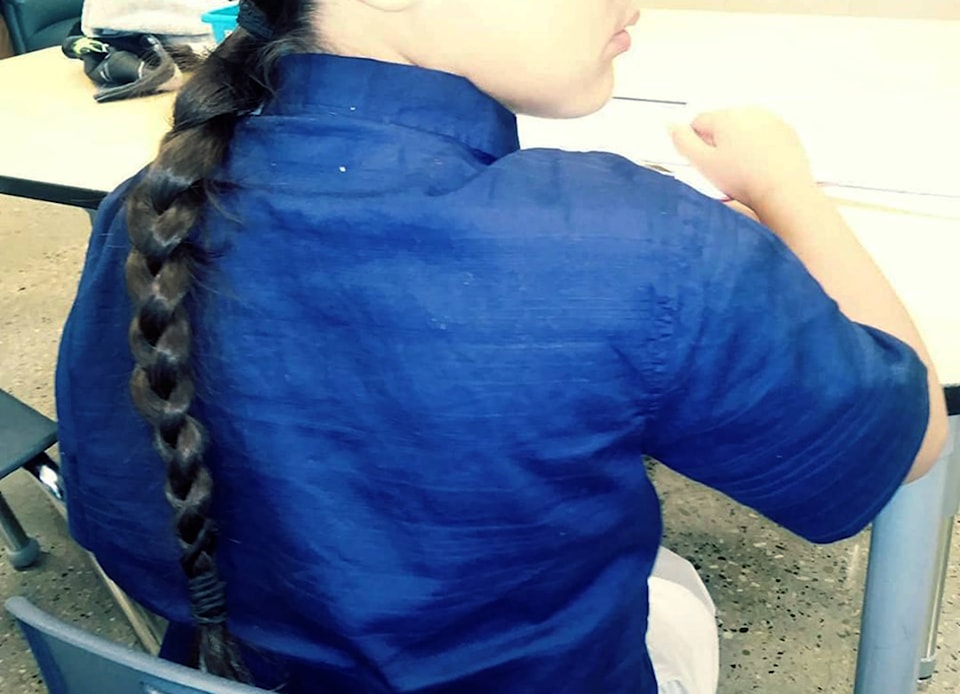The first few months of school with a new class and a new teacher can be hard for any child, but for one Cree family with four boys who wear their long hair in braids to honour their heritage, unwanted attention and questions are inevitable.
Azure, their mother, says they are fairly used to experiencing this at the start of a school year, and her boys are resilient.
She became more than a little concerned, however, when her five-year-old son, Adam, came home from his school in south Edmonton with his hair undone for the second time this year. He was upset and crying.
Azure and three of the four boys, including Adam, are members of Samson Cree Nation in Maskwacis.
Azure braids her son’s hair tightly each morning, from the nape of the neck. The elastics are tight and shouldn’t come out on their own. She knew something wasn’t right and asked him what happened.
His hair had been tightly braided that morning for picture day with extra hairspray, so it didn’t make sense the ties would come out on their own.
When asked, Adam said the elastic had been pulled out by another child at school.
“In the moment, when it happens … you’re hurt, you’re frustrated,” said Azure.
It was very upsetting, as other children shouldn’t feel it is OK to be touching his hair, never mind pulling out his braid, she says.
In her initial reaction, she made an eloquent post to a Ponoka community Facebook page that read, in part:
“This is a boy with a braid. His name is Adam …
“This is a boy with a braid. He is proud of his hair … Sometimes he gets called a girl and other times, his peers will pull his hair ties out and has no one to help him tie his hair back up until the end of the day.
“This is a boy with a braid. It hurts his feelings when he is called names because of his long hair.
“This is a boy with a braid. We will not cut his hair because people do not understand.
“There is no reason why he should come home ashamed of his hair; but today he did. It hurts. The tears hurt. Hugs and words were not enough.
“Every day we will push through this, and every day, he will walk through those doors at school with pride because he is a boy with a braid.”
Azure stresses, “We love our school,” saying the school was quick to respond and it just took one discussion to address the issue.
Azure says she spoke out, not to point fingers or to create controversy, but to spread awareness and start a conversation.
Since her post, Azure has received messages from people from far and wide.
A “massive” amount of messages of support poured in from Oklahoma, Kansas and Hawaii, and from closer to home, from Lacombe and Drayton Valley.
Some told her stories of their own painful experiences, and others thanked her for sharing or provided messages of support.
“It’s powerful, very powerful.”
Some were from teachers, moms, dads, foster parents of native children, and they were from all ethnicities, including German, Irish, Scandinavian and Metis.
One story was particularly difficult for Azure to read. It was the story a young adult in his 20s involved in sports, who asked his mother to cut his hair, deciding he couldn’t take the taunting any longer.
“That was a really tough story to hear. I can’t imagine having to do that.”
Some messages were from parents whose children have been bullied, including the mother of a child with autism.
“It’s almost like everyone has the same experience.”
Different cultures grow their hair for different reasons.
“Our significance is learning about our culture and wanting my boys to understand who they are and their identity,” said Azure.
